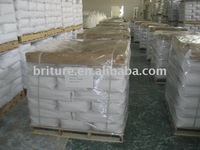- Other Chemicals[7]
- Pigment[6]
- Paint & Coating[4]
- Sulphate[1]
- Chemical Auxiliary Agent[2]
- Other Earthwork Products[5]
- Other Plastic Products[1]
- Plastic Product Making Machinery[1]
- Organic Intermediate[5]
- Oxide[2]
- Printing Inks[2]
- Polymer[1]
- Other Organic Chemical[1]
- Food Additives[5]
- Starch[1]
- Ester & Derivatives[2]
- Fiberglass Yarn[2]
- Polypropylene Fiber[2]
- Carbonate[1]
- Alkali[1]
- Chemical Product Machinery[4]
- Other Food Processing Machinery[1]
- Plastic Rods[7]
- Contact Person : Ms. Qiang Linda
- Company Name : Briture Co., Ltd.
- Tel : 86-551-3523918
- Fax : 86-551-3517768
- Address : Anhui,Hefei,Room 1306 Block C, Blue Ocean Mansion, Qianshan (S) Road
- Country/Region : China
- Zip : 230022
Titanium Dioxide Rutile C521 Chloride process
Titanium Dioxide Rutile Grade C521
MOLECULAR FORMULA: TiO2
PROPERTIES: it is white powder, insoluble in water, non-toxic, chemically extremely stable, surface treated with Aluminium, zirconium compounds and modified with organic compounds, it has excellent pigment properties, such as high whiteness, gloss, hiding power, tinting power and well dispersibility, excellent weathering resistance and chalking resistance.
APPLICATIONS: it is widely used in the industries of aqueous and solvent-based exterior paints, electro-deposition paints, coating, plastics, rubber, printing ink, high quality paper, waxed paper and leather finishes, cosmetics etc.
SPECIFICATIONS:
Product:Titanium Dioxide Rutile -C521 Batch#: 11022802 | |||
Item Denomination | Test Method | Specification | Result |
Tio2 % | ICP | ≥93% | 94.8 |
Whiteness % | With standard sample ratio | ≥95% | 100 |
Eliminates the color ability % | With standard sample ratio | ≥95% | 100 |
105°C Volatile % | GB5211.3 | ≤0.1% | 0.05% |
Water-soluble substances % | GB5211.2 | ≤0.5 | 0.5 |
PH | GB1717 | 6.5-8.5 | 8 |
Oil Absorption (g/100) | GB5211.15 | ≤22 | 20 |
Residue (45μm) % | GB5211.14 | ≤0.1 | 0.01 |
Resistance in water slurry (Ω.cm) | GB5211.12 | ≥95 | 96 |
Titanium Dioxide Rutile C521 Chloride process






